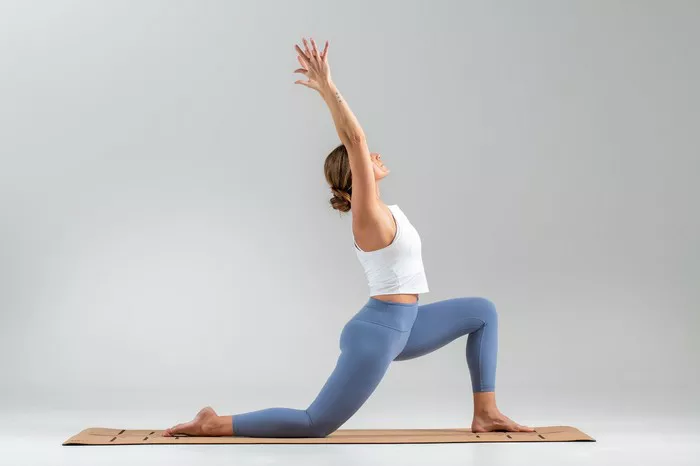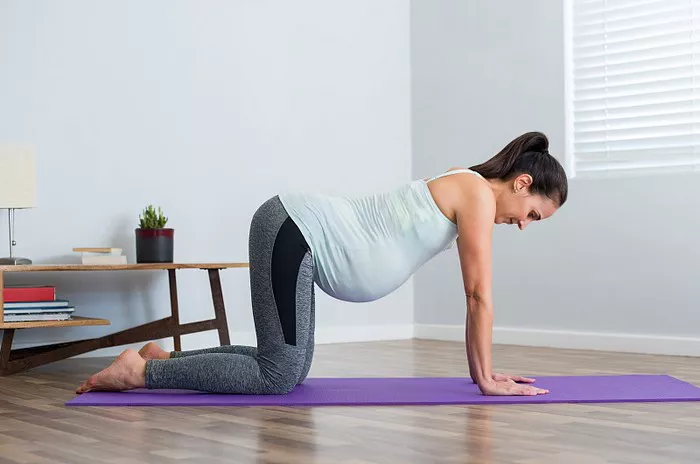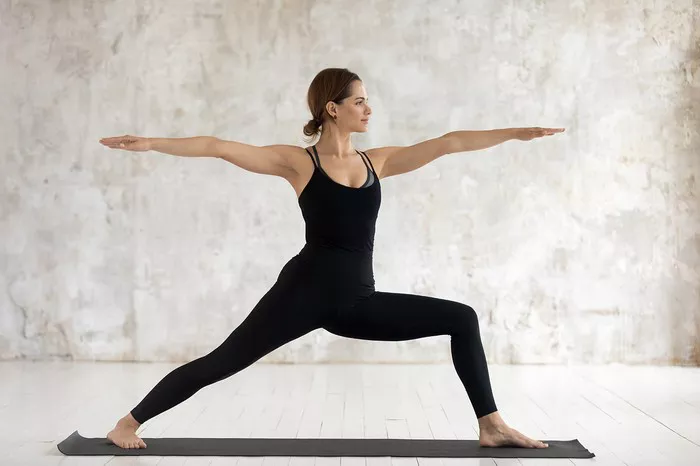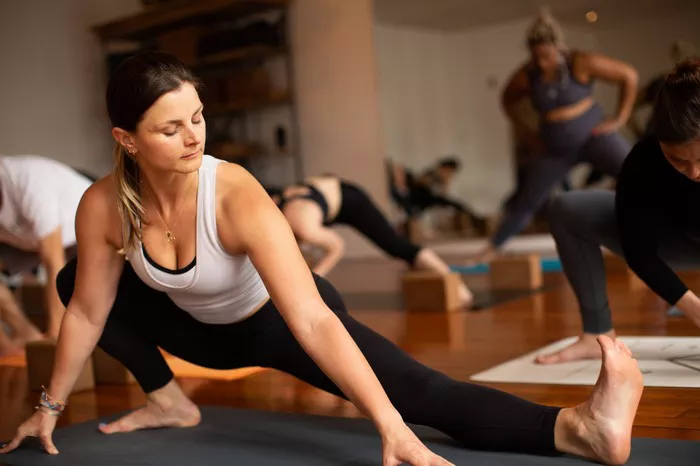Yoga has been practiced for thousands of years, and its benefits extend far beyond the physical. Each asana, or posture, offers its unique advantages, addressing different aspects of our physical, mental, and emotional well-being. One such advanced pose that stands out for its remarkable benefits is the Handstand Lotus Pose, also known as Adho Mukha Padmasana in Sanskrit. This pose, which combines the inverted position of a handstand with the seated cross-legged posture of Padmasana (Lotus Pose), requires a high level of strength, balance, and flexibility. While it is often considered an advanced posture, the benefits of practicing the Handstand Lotus Pose are vast, encompassing improvements in strength, flexibility, mental clarity, and spiritual awareness.
This article will explore in detail what the Handstand Lotus Pose is, how to perform it safely, and the numerous physical, mental, and spiritual benefits that come with its practice.
What is Handstand Lotus Pose?
The Handstand Lotus Pose is a combination of two powerful asanas: the handstand (Adho Mukha Vrksasana) and the Lotus Pose (Padmasana). In the traditional Lotus Pose, the practitioner sits on the floor with their legs crossed and feet placed on the opposite thighs, a posture that encourages deep meditation and inner stillness. In the Handstand Lotus Pose, this cross-legged position is achieved while being inverted and supported by the hands in a handstand position.
Steps to Perform the Handstand Lotus Pose:
Warm-Up: Before attempting the Handstand Lotus Pose, it is essential to prepare the body with a proper warm-up. Focus on warming up the wrists, shoulders, core, and legs. Perform shoulder openers, stretches for the hamstrings, and wrist mobility exercises to ensure you are ready for the intensity of this pose.
Starting in a Handstand: Begin by coming into a handstand, making sure that your arms are straight and your core is engaged. Your hands should be shoulder-width apart, and your fingers spread wide to create a solid foundation.
Transition into Lotus Pose: Once you are stable in the handstand, begin to lift one leg into a lotus position, placing the foot on the opposite thigh. Then, bring the second leg up into the lotus position. It may take some practice to balance in this inverted lotus position, so start by using a wall for support if necessary.
Balance and Hold: Focus on maintaining balance by engaging your core and keeping your legs firmly in position. Ensure that your shoulders are aligned with your hands, and keep your gaze steady. Hold the pose for as long as you feel comfortable, gradually increasing the duration as your strength and stability improve.
Exit the Pose: To safely exit the pose, gently lower one leg at a time and come back into a regular handstand, then gradually come down to the ground.
Precautions:
The Handstand Lotus Pose is an advanced posture that requires considerable strength, flexibility, and balance. Practitioners should have a strong foundation in both the handstand and Lotus Pose before attempting this combination. Additionally, the pose can put strain on the wrists, shoulders, and lower back, so it is important to practice with mindfulness and avoid pushing beyond your limits. If you are new to either of these poses, it is advisable to work with a qualified instructor and use props like a wall for support until you feel confident in your ability to perform the pose safely.
The Benefits of Handstand Lotus Pose
1. Enhances Strength and Endurance
One of the primary benefits of the Handstand Lotus Pose is the development of upper body strength, especially in the arms, shoulders, and wrists. Holding a handstand, even without the added challenge of the lotus position, requires significant strength in the shoulders and arms, as they bear the full weight of the body. Adding the lotus position, with the legs crossed and feet held up high, increases the complexity of the posture and engages the core, hip flexors, and thighs.
The practice of this pose also improves endurance. As you hold the handstand lotus, the body becomes accustomed to maintaining balance in an inverted position. This teaches the muscles to work for extended periods without fatiguing, building stamina over time.
2. Improves Balance and Coordination
The Handstand Lotus Pose requires a delicate sense of balance and coordination. Balancing in a handstand, while keeping the legs in a fixed lotus position, demands a high level of proprioception, or the body’s ability to sense its position in space. Practitioners need to develop stability through their shoulders, arms, and core while keeping their legs engaged in the lotus position.
Regular practice of this posture improves overall balance, coordination, and body awareness. This is not just beneficial for yoga but can also translate into other physical activities and daily life, improving your overall stability and agility.
3. Increases Flexibility
The lotus position requires deep flexibility in the hips, knees, and ankles. For many people, the Lotus Pose is a challenging posture that demands regular practice to achieve the necessary range of motion in the hip joint. When performed in a handstand, the stretch on the hip flexors, hamstrings, and lower back is enhanced due to the inversion.
The Handstand Lotus Pose is an excellent way to deepen hip flexibility, allowing for greater mobility in the pelvis and the surrounding muscles. It can also improve flexibility in the legs and lower back, as the core is engaged to stabilize the body while the legs are positioned in the lotus.
4. Boosts Circulation and Detoxification
Inversions, such as the handstand, encourage better blood circulation throughout the body. When the body is inverted, gravity helps blood flow toward the upper body and brain, which can improve oxygenation of the brain and increase mental clarity. In addition, the movement of blood from the lower body to the upper body can stimulate lymphatic drainage and aid in detoxification.
In combination with the lotus position, the Handstand Lotus Pose also helps to improve the flow of energy (prana) throughout the body, stimulating the root chakra (Muladhara) and sacral chakra (Svadhisthana), which are associated with grounding and creativity, respectively.
5. Improves Mental Focus and Clarity
Yoga postures are often used as tools to cultivate mindfulness and present-moment awareness, and the Handstand Lotus Pose is no exception. In this pose, the practitioner must maintain a high level of concentration and focus to balance in the inverted position while keeping the lotus legs intact. The mental discipline required to stay focused during this pose strengthens the mind and cultivates the ability to remain present and centered.
The challenge of balancing in a handstand while maintaining the lotus position also helps clear the mind of distractions, promoting mental clarity and improving the ability to stay calm under pressure.
6. Promotes Inner Peace and Spiritual Growth
The lotus position, when combined with the inverted handstand, can have profound spiritual benefits. In yoga, the lotus symbolizes purity, enlightenment, and the blossoming of inner peace. By practicing the Handstand Lotus Pose, practitioners can deepen their connection with these qualities, allowing the body to feel grounded and open to spiritual growth.
The inversion aspect of the pose allows practitioners to view the world from a different perspective, fostering a sense of release from the ego and encouraging a sense of detachment from daily stresses. This shift in perspective can help cultivate a deeper sense of calm and tranquility, leading to a heightened sense of spiritual awareness.
7. Stimulates the Nervous System
Inversions such as the Handstand Lotus Pose stimulate the parasympathetic nervous system, also known as the “rest and digest” system. This is the part of the nervous system responsible for relaxation and recovery. By engaging in regular inversion practices, such as the Handstand Lotus, you can promote a sense of calm and relaxation, reduce stress levels, and help to balance the autonomic nervous system.
Inversions also help release tension in the neck and spine, which can ease the physical symptoms of stress, such as headaches or tightness in the shoulders and back. This makes the Handstand Lotus Pose a useful practice for managing stress and promoting overall well-being.
8. Supports Core Strength and Stability
A crucial element of both the handstand and the lotus pose is core strength. In the Handstand Lotus Pose, the core is heavily engaged, providing stability and balance as the body remains inverted. Building core strength in this posture not only benefits your yoga practice but also supports overall physical health by improving posture, reducing the risk of injury, and supporting the spine.
Core stability is important for maintaining proper alignment and preventing lower back pain, making the Handstand Lotus Pose an excellent way to strengthen the muscles of the abdomen and lower back.
Conclusion
The Handstand Lotus Pose is an advanced yet highly beneficial yoga posture that challenges the body, mind, and spirit. With its ability to enhance strength, flexibility, balance, and mental clarity, it is a valuable addition to any yoga practice. Though it requires dedication and consistent practice to master, the rewards are immense, from improved physical health to a deeper connection with inner peace and spiritual growth.
Whether you are a seasoned yoga practitioner or an aspiring yogi, the Handstand Lotus Pose offers a unique opportunity to challenge your body and mind while reaping the countless benefits of this powerful asana. As with any advanced pose, it is important to approach it with patience, mindfulness, and respect for your body’s limits, ensuring that your journey toward mastering the Handstand Lotus Pose is both safe and transformative.
Related Topics:
























